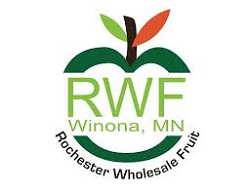While The Packer's Fresh Trends 2025 survey found that consumers are quick to cut back on value-added produce when they're pinching pennies, more than half of consumers surveyed, or 55%, reported having purchased more value-added (fresh-cut fruit and veggies, ready-to-heat, ready-to-eat) produce in the past five years.
That percentage increased significantly among consumers with dependent children. Seventy-seven percent of households with two dependent children and 72% of households with three or more dependents reported purchasing more value-added produce in the past five years.
And when asked, “If price were not an issue, which of the following items would you purchase more of?” 33% of consumers indicated value-added produce.
Jonna Parker, vice president of the fresh foods group for Circana, sees opportunity in the category.
“There's some really positive points in value-added produce,” she said. “With fresh mango, for example, a good portion of the category is in value-add.”
Perhaps related, Fresh Trends 2025 found that only 33% of consumers feel comfortable selecting a ripe mango for immediate consumption.

“But other than fruits, some kits and some single-serves salads, the produce convenience category has been relatively flat,” Parker continued. “So, even within value-added produce, there are parts that are growing while other parts are flatlining, and so it's averaging out to hold steady.”
Saving Time is Key
When talking about value-add, time is of the essence, said Parker.
“Too often we think about value-add produce versus whole produce, when really the choice for the consumer is: Do I have time to make this or is there another solution?
“One of the most important takeaways about value-added produce is that the majority of dinners take 30 minutes or less to prepare, and we're seeing growth, particularly in things that take between five to 15 minutes and are really about assembly and simple prep,” she said.
Fresh Trends 2025 found that when asked to choose one primary reason for their increased purchase of value-added produce, convenience and saving time was the No. 1 driver at 44% of consumers. Thirty percent cited flavor and taste; 17% chose “value” and just 9% indicated reduced waste.

Not surprisingly, at 51%, families with three or more dependent children cited convenience and saving time as the primary reason to purchase more value-added produce than any other demographic.
Generationally speaking, 47% of Gen Z, 42% of millennials, 46% of Gen X, 43% of baby boomers and 27% of traditionalists indicated convenience and saving time were the primary drivers to purchase value-added produce items.

Who's Buying More
Another positive for the category: 62% of consumers said they anticipate continuing to buy more value-added or prepared produce over the next 12 months. And again, that percentage surges for households with dependent children.
Eighty-two percent of households with two dependent children and 77% of households with three or more dependent children said they anticipate continuing to buy more value-added produce in the next 12 months.
Younger shoppers led the way in terms of expecting to buy more value-added/prepared produce in the next 12 months, with 74% of millennials and 64% of Gen Z indicating so, compared to 59% of Gen X, 44% of baby boomers and 47% of traditionalists.
Frequency of Purchase
At 42%, baby boomers are the generation reporting the strongest buying of prepared produce from retail foodservice at a cadence of once a week.
Related: Get more insights by downloading the Fresh Trends 2025 report here.














